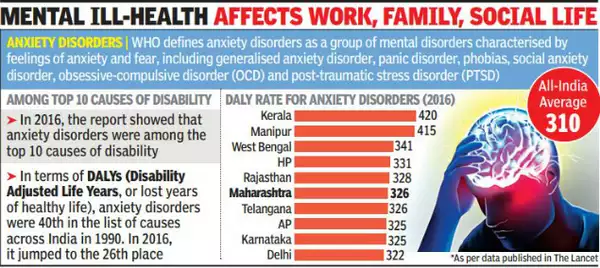In the Hindi language, nature is referred to as Prakriti, denoting a perpetual state of creation. Within the realm of nature, phenomena unfold effortlessly: water flows, fire spreads, wind blows, and the sun rises and sets without any conscious effort. Plants grow and thrive seamlessly. Nature remains incessantly engaged in the act of creation. However, in the case of animals, nature only facilitates the initial stages of creation; thereafter, animals must undertake the responsibility of caring for their progeny. Among all creatures, human infants are born as the most vulnerable. The upbringing of a human child thus falls upon the shoulders of humanity. Unlike elephant and horse cubs, which can stand within minutes of birth and begin walking within hours, humans take a significantly longer time to develop such basic abilities. It takes nearly a year for a human child to stand upright and even longer to master walking.
Subsequently, years are dedicated to the education of these children. However, the question arises: what exactly are we educating them for? How does one educate a human child when we ourselves are not fully cognizant of the capabilities and functions of the human mind? Even our most esteemed scientists have barely scratched the surface, understanding a mere five percent of the intricacies of the human brain. Nature has indeed entrusted parents with a monumental task – in moments of pleasure and joy, they have brought forth the most wondrous beings in the universe.
At the core of human education should lie the pursuit of self-understanding and awareness of one’s capabilities. Unfortunately, this fundamental aspect has often been overlooked. In the early stages of human development, when connectivity between civilizations was minimal, humanity’s quest for understanding and developing itself spanned various parts of the world. During this era, individuals were free to learn from nature and share their knowledge with others, giving rise to what we now term as native cultures. Every culture originated as a native culture, shaped by the understanding gleaned from the natural world.
On a broader scale, two major civilizations emerged in the eastern and western parts of the world – Mesopotamia and the Indus Valley civilizations. Each civilization developed its unique method of transmitting knowledge from one generation to the next, guided by its vision for the future. The flow of knowledge from one generation to the next can be termed as “knowflow.” Eastern civilizations, blessed with abundant natural resources, experienced a different knowflow compared to the harsher conditions of their western counterparts. Due to the tougher living conditions, western civilizations were often embroiled in conflicts, fostering a culture of competition for survival.
As a consequence of their relative ease of living, eastern civilizations were sometimes perceived as lazy, cowardly, and passive followers. This vulnerability became an opportunity for exploitation by the western world. Invaders from both land and sea – Muslims and Christians, respectively – sought to exploit and loot the wealth of the eastern world, inadvertently disrupting their knowledge systems. In the process, valuable systems like Ayurveda, the science of life, were also unwittingly destroyed.

Ayurveda, with its classification of humans based on physiology and psychology, offers profound insights into individual personalities. By understanding these classifications – “vat, pitt, and kaf” – one can discern the personality of a child and plan for their future career and profession. Similarly, in western contexts, attempts have been made to define human personality through various models and frameworks. From Hippocrates’ four temperaments to modern models like the Holland codes and HEXACO, these frameworks serve as tools for understanding and navigating the complexities of human personality and behavior.
It is indeed perplexing that while Corporate entities and Universities readily adopt relatively recent frameworks such as the Holland codes and HEXACO for educational and employment purposes, there has been a notable absence of significant studies on the ancient Ayurvedic principles of Vaat, Pitt, and Kaph theory, or Vapik theory. This raises the question: why has a venerable system with over 5000 years of history been overlooked and even disregarded?
Today, we aim to delve into the fundamentals of Vapik theory and explore how it can inform both individual career selection and child upbringing. According to Ayurveda, all living beings are composed of five fundamental elements: space, air, water, fire, and earth. Human beings, being no exception, are formed from the combination of these elements, giving rise to three primary “dosas” known as Vaat, Pitt, and Kaph. These dosas serve as the foundation of our Vapik Theory.
The Vapik theory goes beyond mere physical assessment; it encompasses an understanding of both the physiology and psychology of the individual. While historically utilized for treating physical ailments, this ancient wisdom has not been sufficiently explored for its potential applications in personality development, career counseling, health prognosis, dietary choices, and other areas.
The disparity in attention given to modern frameworks compared to ancient wisdom prompts reflection on the reasons behind this neglect. Despite its time-tested efficacy, the Vapik theory remains largely untapped in contemporary contexts. As we delve deeper into its principles, we may uncover valuable insights that could enrich not only individual lives but also broader societal systems. Thus, it is imperative to reevaluate and integrate these age-old teachings into our modern educational and professional paradigms, acknowledging their potential to enhance holistic well-being and fulfillment.
Here is a table for understanding basic body and personality types and professions related with them :
| Characteristic |
Kapha |
Pitta | Vata |
| Body Frame | Large frame, Stout, Thick Skin, Broad chest, Bones not Prominent | Medium frame, Moderate muscle development, slender and delicate frame | Thin Frame, small frame, slender, thin, flat chest, Prominent veins, taller or smaller than average |
| Body Weight | Obese, tendency for excess weight | Moderate Weight | Thin, lean and slender |
| Skin Type | Thick, Oily, Cold, Pale | Soft, Warm, Moist, Slight wrinkles, moles and acne | Dry, Rough, Thin, cracked, cool |
| Eyes | Big, Large, Wide, Prominent, dense | Medium size, Sharp and penetrating gaze | Sunken, Dry, small, thin |
| Hair | Thick , Dark, Soft and wavy | Thin, fine, silky and Oily | Dry, Scanty, Coarse, Curly |
| Complexion | Fair, Bright | Copper, Yellowish, Reddish | Brown |
| Disease Tendency | Mucus , Congestion | Inflammation, Heat, fever | Nerve Diseases |
| Personality Strength | Loyal, Calm, Content, forgiving, Tolerant | Leaders, Sharp, Good orators, Ambitious | Creative, Quick Understanding, Imaginative. |
| Personality Weakness | Greed, Attachment , Possessiveness, Self-Centered | Anger, Jealous, Irritability | Nervous, Fearful, Anxious, Lack of will power |
| Physiological Traits | Slow Digestion, Good Stamina, Sound sleep, Crave bitter and Pungent Food | Good Digestion, Strong Appetite and metabolism, body temperature slightly more than average | Crave sweet, sour and Salty food, Disturbed sleep, cold hand and feet. |
| Miscellaneous Trait | Relaxed, loving, faithful, prone to depression | Focused, assertive, Competitive, Assertive, Passionate | Lively, fun, full of joy and enthusiasm |
| Profession Suggested | Business, Policy Makers, long term projects | Leadership role, administration, controlling | Creative thinking, research, adventure |
Based on the above classification, humans can choose the profession, within the present education system based on their prakriti.
Note : I have coined two new words in this article they are :
Knowflow : Knowledge which flowed from one generation to next generation by means of songs, words, literature, books, religion, etc. There are two major knowflow in the world, one is western knowflow, where humans are the center of the world and everything else is for their consumption and use. Other knowflow is “Eastern knowflow” where humans are part of Nature and its presumes every creation in nature support other creation in direct or indirect way.
Vapik Theory : Vapik Theory is based on Ayurveda, and it helps in analyzing the physiology and psychology of humans. Based on Vapik theory humans can groom their children, decide their own and child carrier, plan for their health and food etc.



